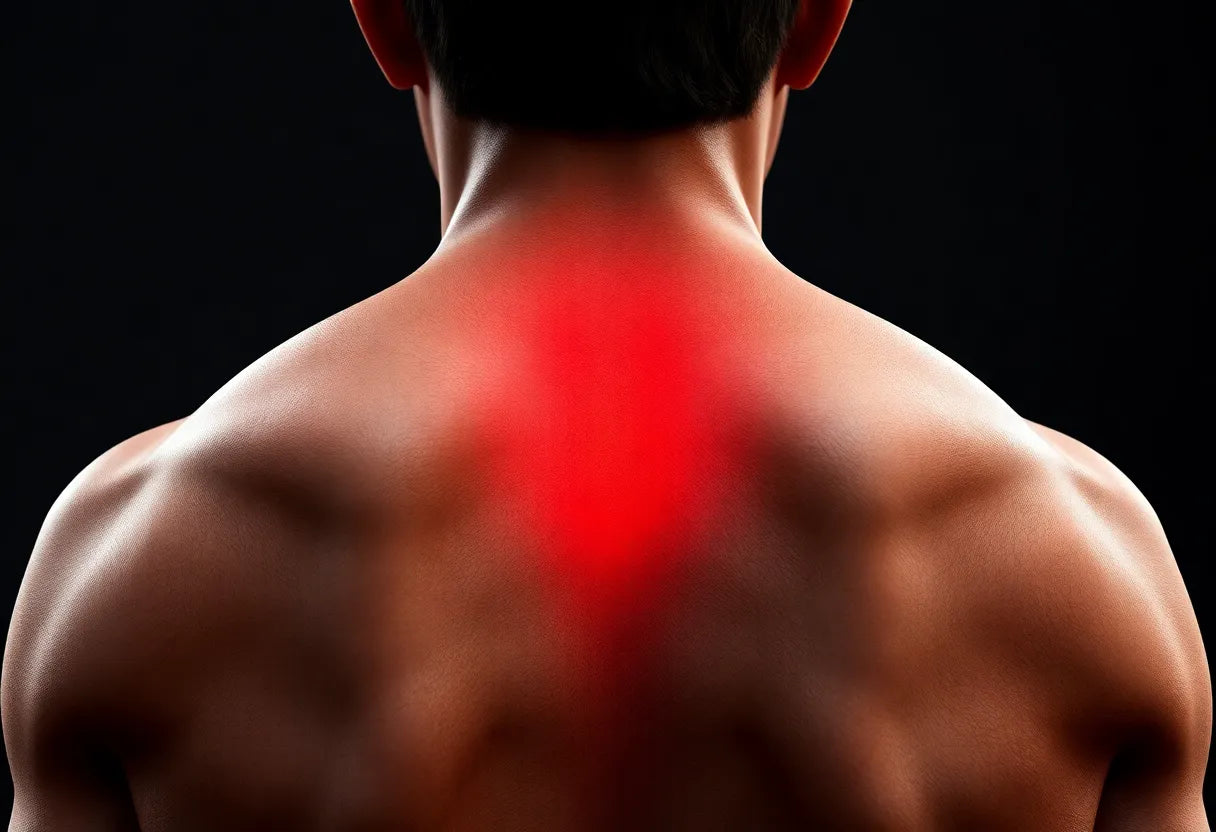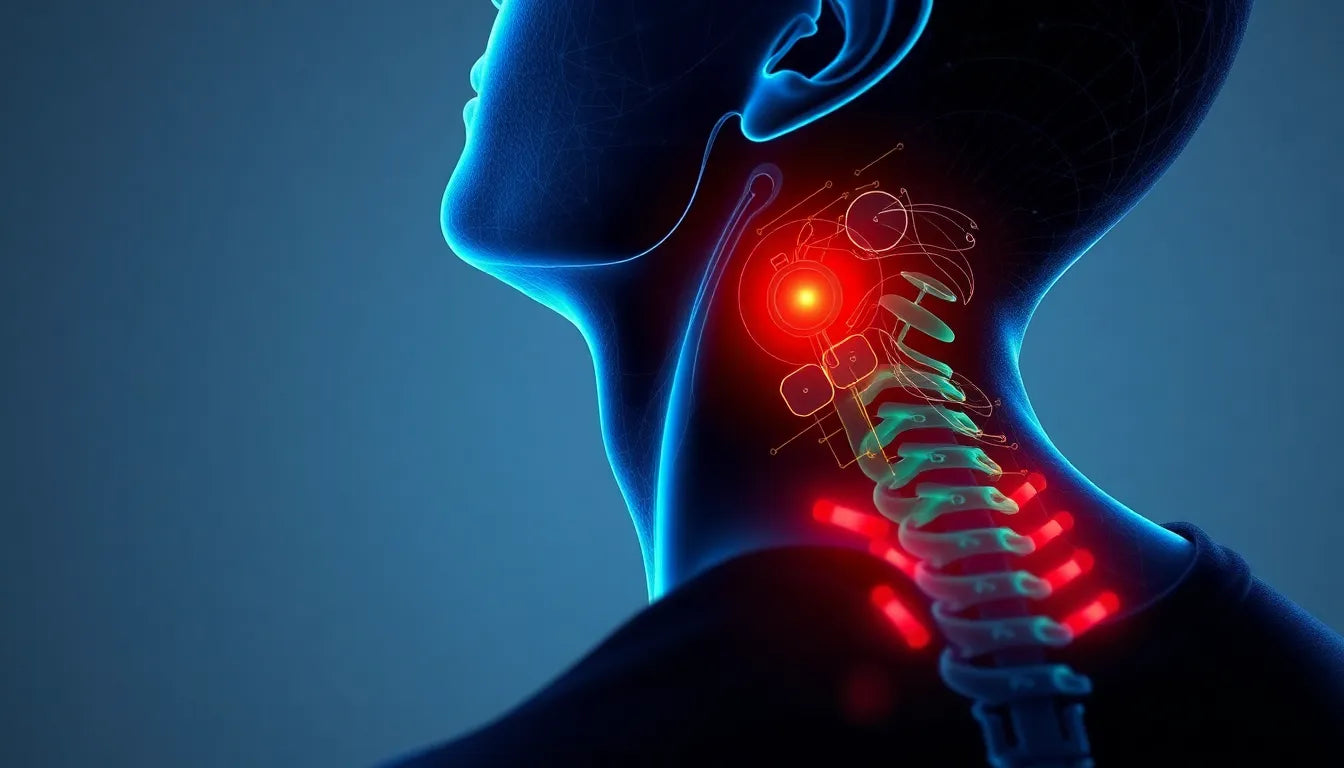Upper back stiffness is a common discomfort that many individuals experience at some point in their lives. This issue can arise from a variety of lifestyle and health factors, making it essential to understand its underlying causes. By gaining insight into these causes, individuals can effectively address and prevent this uncomfortable condition, improving their overall quality of life.
Understanding the prevalence of upper back stiffness
Upper back stiffness is more prevalent than many might assume, impacting daily activities and overall well-being. This discomfort can hinder one's ability to perform simple tasks, such as lifting objects or even sitting comfortably for extended periods. While some causes of upper back stiffness are well-known, such as poor posture or muscular strain, others might be less obvious and often overlooked. Recognizing these hidden culprits is crucial for managing and alleviating symptoms.
The impact on daily life and quality of life
The effects of upper back stiffness extend beyond mere physical discomfort. It can lead to decreased productivity, increased stress levels, and even emotional distress. For individuals who engage in physical activities or have jobs that require prolonged sitting or repetitive movements, the impact can be particularly significant. Addressing the causes of upper back stiffness not only alleviates pain but also enhances one's ability to engage fully in both professional and personal pursuits.
Exploring common and hidden causes
This blog post aims to delve into both the common and lesser-known causes of upper back stiffness. By exploring these factors, readers will be equipped with the knowledge to identify and manage their symptoms effectively. From muscular strain and poor posture to degenerative conditions and underlying health issues, understanding these causes is the first step in finding relief. Additionally, addressing risk factors such as age, weight, inactivity, and stress can further aid in the prevention of this discomfort.
As we navigate through this exploration, it is important to remember that while some causes are easily addressed through lifestyle changes, others may require professional intervention. By becoming informed about the various contributors to upper back stiffness, individuals can take proactive steps toward improving their health and well-being.
muscular strain and overuse
One of the primary causes of upper back stiffness is muscular strain, often resulting from repetitive movements or overuse. Activities that involve poor lifting techniques or sports that require frequent throwing or twisting can lead to muscle strains. These strains occur when muscle fibers are stretched beyond their limits, causing small tears that result in inflammation and stiffness. Over time, these repetitive actions can lead to chronic inflammation, further exacerbating stiffness in the upper back muscles.
poor posture and muscle deconditioning
Poor posture is another significant contributor to upper back stiffness. Many people spend prolonged hours at desks, often in slouched positions, which weakens the upper back muscles over time. This muscle deconditioning makes them more susceptible to stiffness and discomfort. An improper desk setup, lacking ergonomic support, can worsen this issue. Ergonomics plays a crucial role in preventing muscle deconditioning and associated stiffness by promoting proper alignment and reducing strain on the muscles. Incorporating ergonomic chairs, desks, and accessories can aid in maintaining a healthy posture and minimizing stiffness.

Men's Posture Shirt™ - Black
Patented shirt activating muscles to improve posture and relieve upper back tension.
degenerative conditions
As individuals age, they become more susceptible to degenerative conditions such as osteoarthritis, herniated discs, and spinal stenosis. These conditions are characterized by the wear-and-tear mechanisms that affect the spine, leading to stiffness and pain. Osteoarthritis, for example, involves the breakdown of cartilage that cushions the joints, while herniated discs occur when the soft material inside the disc pushes out, irritating nearby nerves. Spinal stenosis, the narrowing of the spinal canal, can also compress nerves, contributing to upper back stiffness. Understanding these age-related changes is essential for managing their impact on the upper back.
myofascial pain syndrome and spinal deformities
Myofascial pain syndrome is a chronic condition characterized by muscle contractions and trigger points that can cause ongoing stiffness in the upper back. These trigger points are sensitive areas within the muscle that can cause pain and stiffness when touched or activated. Additionally, spinal deformities such as scoliosis, which involves an abnormal curvature of the spine, can create uneven pressure on the back muscles, leading to stiffness and discomfort. Addressing these conditions often requires targeted therapies, including physical therapy and trigger point release techniques.
health conditions and risk factors
Beyond the more common causes, certain health conditions can also contribute to upper back stiffness. Osteoporosis, arthritis, ankylosing spondylitis, and less commonly, cancer or spinal infections, are known to affect the spine and surrounding muscles. These conditions can lead to inflammation, bone loss, or abnormal growths, all of which may result in stiffness. Additionally, risk factors such as age, weight, inactivity, and stress can increase an individual's vulnerability to stiffness. Understanding these risk factors and health conditions is crucial for early detection and management.
In conclusion, upper back stiffness can arise from a variety of causes, ranging from lifestyle factors like poor posture and muscular strain to medical conditions such as degenerative diseases and myofascial pain syndrome. By identifying and addressing these causes, individuals can take proactive steps to alleviate discomfort and improve their quality of life. Whether through ergonomic adjustments, targeted exercises, or medical intervention, understanding the hidden culprits of upper back stiffness is the first step toward effective management and prevention.
addressing upper back stiffness in special populations
Upper back stiffness can uniquely affect certain groups, such as women during menopause or pregnancy. Hormonal changes during menopause can lead to a decrease in bone density and muscle mass, making women more susceptible to stiffness and discomfort. Similarly, pregnancy can alter posture and increase the strain on the upper back due to additional weight and changes in the body's center of gravity. Understanding these specific contributors is crucial for women in these life stages to manage and alleviate stiffness effectively.

Women's Posture Shirt™ - Black
Shirt med patenteret teknologi til at aktivere muskler og støtte god holdning.
practical tips for prevention and relief
Preventing upper back stiffness involves a combination of posture correction, ergonomic adjustments, and targeted exercises. To maintain proper posture, individuals should focus on aligning their ears, shoulders, and hips in a straight line. Ergonomic adjustments, such as using chairs with good lumbar support and ensuring computer screens are at eye level, can significantly reduce strain on the upper back. Incorporating exercises that strengthen the back muscles, such as rows and shoulder blade squeezes, can also help maintain flexibility and reduce stiffness.
ergonomic exercises for upper back health
Engaging in regular ergonomic exercises can play a vital role in preventing upper back stiffness. Simple exercises like shoulder rolls, neck stretches, and upper back stretches can be performed at home or in the office. For instance, shoulder rolls involve lifting the shoulders towards the ears, rolling them back, and then lowering them, which helps release tension. Neck stretches, such as gently tilting the head to each side, can alleviate stiffness in the neck and upper back. These exercises, when done consistently, can enhance muscle flexibility and support overall back health.
frequently asked questions
What are the most common causes of upper back stiffness?
Muscular strain, poor posture, and degenerative changes are the most common causes of upper back stiffness.
How can I prevent upper back stiffness while working at a desk?
Ensure proper ergonomic setup, take regular breaks, and perform stretching exercises to prevent upper back stiffness while working at a desk.
When should I see a doctor for upper back stiffness?
If stiffness is persistent, severe, or accompanied by other symptoms like numbness or weight loss, it is advisable to seek medical advice.
Can stress contribute to upper back stiffness?
Yes, stress can lead to muscle tension, which may result in upper back stiffness.
Are there specific exercises to relieve upper back stiffness?
Yes, exercises focusing on stretching and strengthening the upper back, such as shoulder rolls and neck stretches, can be beneficial in relieving stiffness.
Kilder
- WebMD. (n.d.). "Why Does My Middle and Upper Back Hurt?" WebMD.
- ColumbiaDoctors. (n.d.). "Upper and Middle Back Pain." ColumbiaDoctors.
- Medical News Today. (2019). "What to Know About Upper Back Pain." Medical News Today.
- American Dental Association. (n.d.). "Symptoms and Causes of Back Pain." ADA.
- Bupa. (n.d.). "Upper Back Pain." Bupa Health Information.
- National Institute of Arthritis and Musculoskeletal and Skin Diseases. (n.d.). "Back Pain." NIAMS.
- HSSH Health. (n.d.). "Upper Back Pain When Breathing or Moving: Causes and Treatments." HSSH Health Blog.
- Cleveland Clinic. (n.d.). "Upper Back Pain." Cleveland Clinic.
- Healthdirect Australia. (n.d.). "Upper Back (Thoracic) Pain." Healthdirect.
- Mayo Clinic. (n.d.). "Back Pain." Mayo Clinic.
- Dignity Health. (n.d.). "Upper Back Pain." Dignity Health.
- MyHealth.Alberta.ca. (n.d.). "Upper Back Pain." MyHealth.Alberta.ca.


















